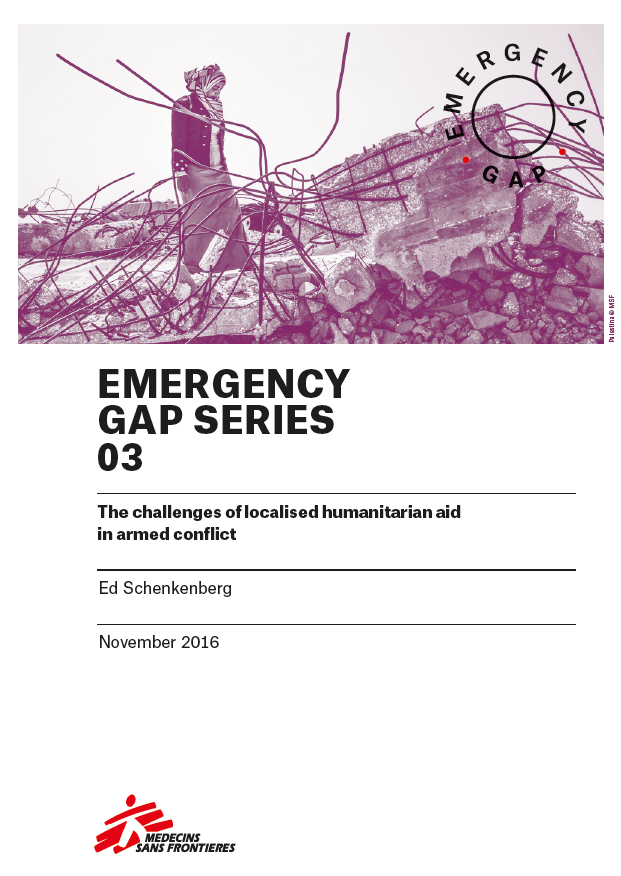Emergency gap: The challenges of localised humanitarian aid
Emergency gap series 03
The current push for a greater localisation of aid culminated with the World Humanitarian Summit’s commitment to put local actors firmly at the forefront of humanitarian responses in their own countries. On the face of it, this most recent call for localised humanitarian action seems entirely valid: why should national and local actors be bystanders when humanitarian crises cause devastation and prompt the need for urgent relief among their fellow citizens? However, upon closer inspection, it seems that the current thinking behind the localisation agenda is too ideologically driven and fails to make some essential distinctions between humanitarian contexts, and to recognise the challenges faced by local actors in conflict settings.
As part of the Emergency Gap series, this paper analyses the role of national and local actors in humanitarian action based on MSF’sexperiences in areas within conflict affected countries where the most urgent needs are found. While MSF has seen many examples of the important humanitarian contributions that national and local actors make, it has also witnessed a number of constraints and challenges that confront these actors when delivering humanitarian assistance, especially in situations of (internal) armed conflict. These limitations, which have been largely ignored by the localisation agenda, are examined in this paper from both a conceptual and practical point of view.
Please join us for the paper’s accompanying event on Tuesday, 29 November @15.00 GMT: The challenges of localised aid in conflict.
Follow the LIVESTREAM HERE


 MSF_EGS03_The challenges of localised humanitarian aid in armed conflict_november 2016_0_0
MSF_EGS03_The challenges of localised humanitarian aid in armed conflict_november 2016_0_0